Sundays Mean Dessert in Lucre, where Trout, Ducks, and Cattle Roam
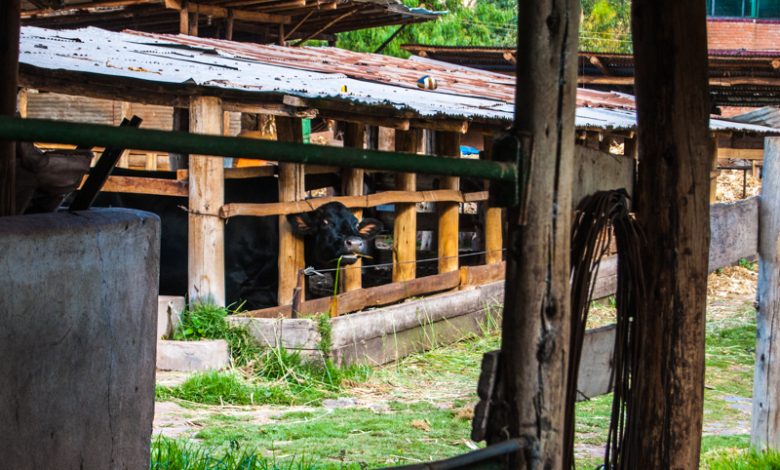
Mooing with relief, cows stand in the stalls while being milked. This is one of the sounds and sights of Lucre, a town not far from Cuzco, known also for roast duck and fried fish. Besides being on the shores of Lake Huacarpay and along a river leading in to it, Lucre has pastureland and is known for its dairy products. But cheese is not its main attraction, instead Lucre’s ice cream and desserts draw people from Cuzco so much that on Saturday and Sunday its plaza fills with the cars of people seeking these delights.
An easy twenty minute drive from Cuzco, Lucre is a small, agricultural town with a charming center that looks as if it came off the many romantic watercolors of idealized Peruvian townscapes sold around Cuzco’s Plaza. Its plaza with enormous trees and a requisite statue opens onto a teeming pastry and ice-cream shop where hordes of weekend visitors jostle each other to look at the glass cases of almost unimaginable delights before lining up at the register and paying their 5 S/ per plate (2.40US) and then placing their order.
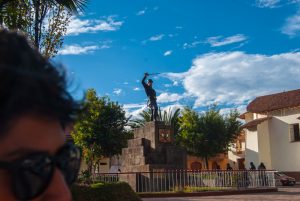
At that time the decide whether to do take away and carry their treat into the plaza to eat, really scarf down since it is just to hard to eat such delicious concoctions slowly, or go past the ice cream cooler and into a very old fashioned patio, two story house with aching balcony on one side and blooming geraniums and a single story on the other. In the middle trows of picnic tables and umbrellas make a space.
In the single story, a large room, like the main room of a family home, opens. It is both a sitting area with comfortable sofas as well as a dining area with a table and chairs. The walls shine with certificates and trophies the owners have won for their fine dairy cows. Pottery cows graze romantically on every available space, a show of black and white contentment that stands as symbol for the business, and one of Cuzco’s regional foods that is so much more than milk, eggs, flour, and flavorings.
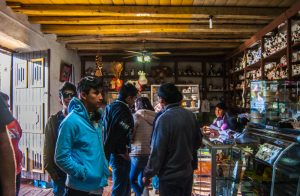
If that is not enough, you can walk down a small hall, to the side to the room, to where a gate stops you. There you will find some of the real cows in a corral and see a traditional family back garden, a play of order and disorder. If it is milking time, they will great you with their calls.

By then your desserts will have arrived on plates. The possibilities are various kinds fo cakes and tortes, such as tres leches in vanilla o chocolate, black forest, and so on, as well as may variations of cheese cake and mousses, chilled fruit and cream, where both are as fresh as the latest squirt of milk in a pail or snap of fruit separating from tree.
Once only crumbs remain on your plate, if you can resist the temptation to lick up the last bits of joy, you can drive past the plaza, along a small river with quaint bridges replete with crosses to drive up a charming canyon of gardens, rocks, fields, and trees by gurgling, running water and find a place to sit in a the mountain sunshine or take a small hike.
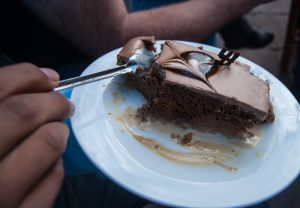
Or you can drive through fields to where you skirt the massive terraced hill that rises to the ancient, now buried city of Pikillacta which under the Wari Empire administered Cuzco, a small part of the whole. On the other side of the highway a sometimes jade and sometimes sapphire lake opens, an enormous gem in a setting of thick reeds.
This is the famous lake Huacarpay, to which families throng and along whose shores they picnic, make huatia, play football, fly kites and just spend time together every weekend.
A map of Cuzco the state can be traces with food that typifies each place. This food can often be found elsewhere, such as the restaurant Nevada on Cuzco’s Plaza de Armas run by the Malpartida family from Lucre which serves the same desserts as in the town and tries to pull up the same atmosphere with pictures of cows and ceramic bovines hither and yon. Nevertheless, the foot stands for the place and is best consumed there, as landscape, society, and people come together as one on the plate and in the belly.
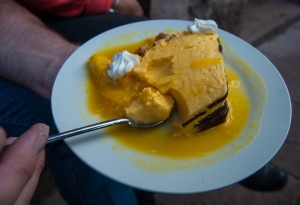
Sundays and Lucre belong together. Before going there you might want to stop for chicharron in Saylla or guinea pig in Tipón. On the way home you will want to make a stop on the highway where a branch goes to the colonial center of Oropesa, to buy a bag of freshly baked pan ch’uta, round, enormous, and scented with aniseed, even though you can buy them anytime in the city. But there is nothing like bread from the place it symbolizes, or dessert from Lucre.




